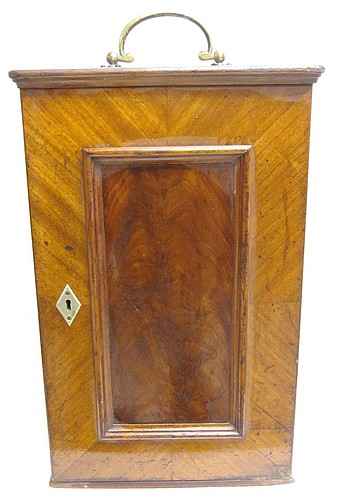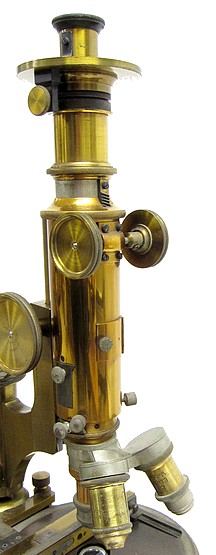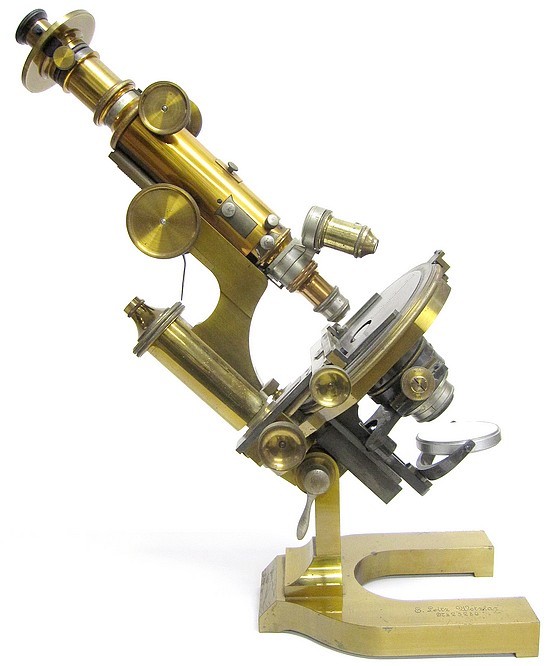
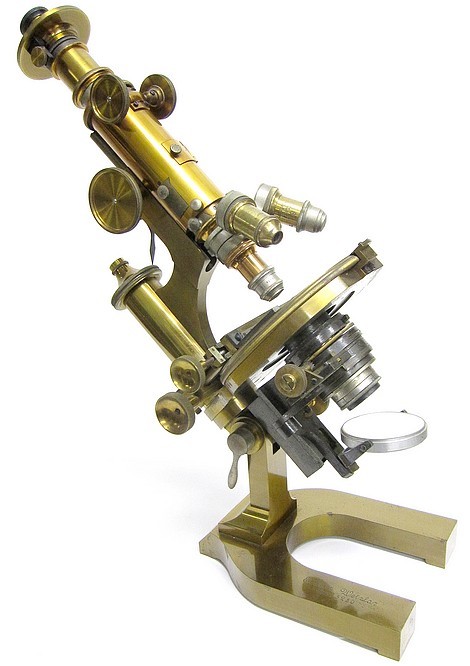
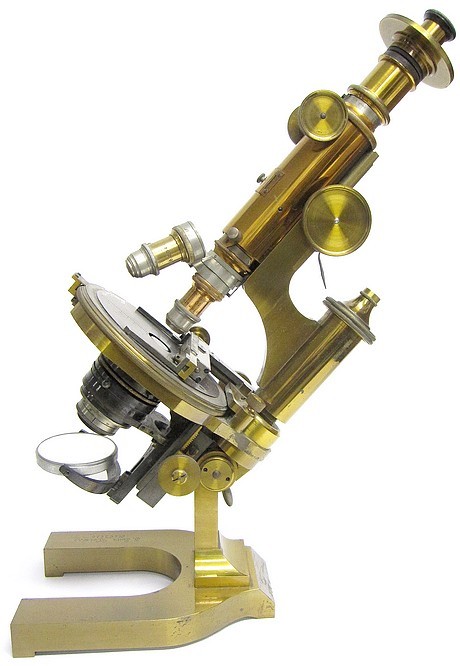
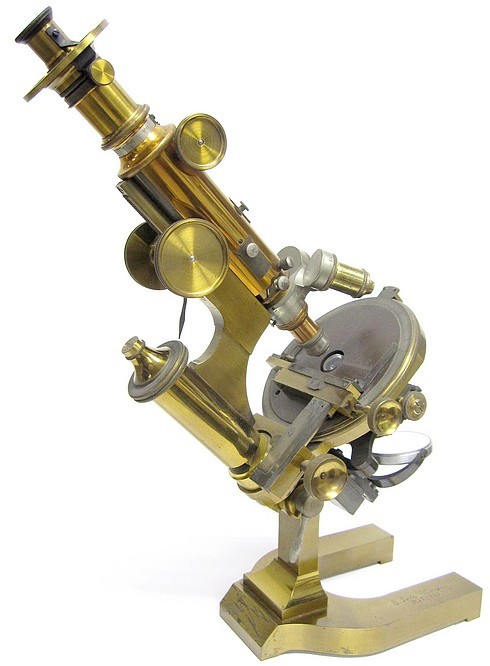
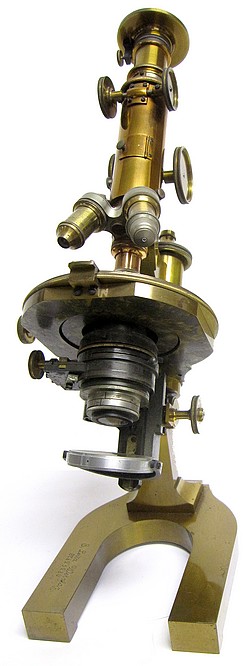
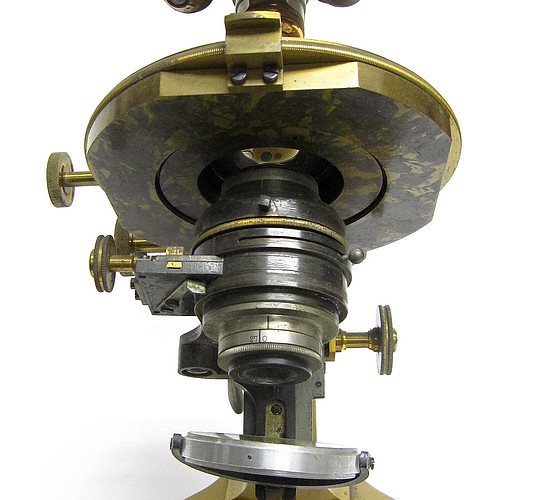
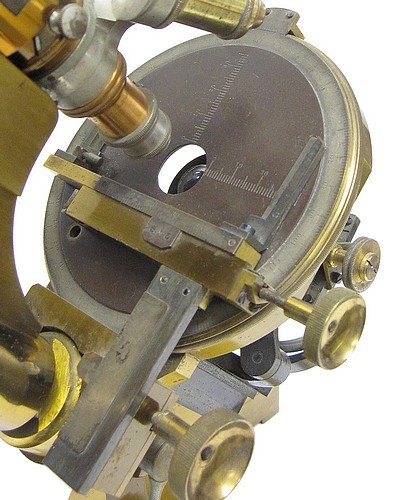
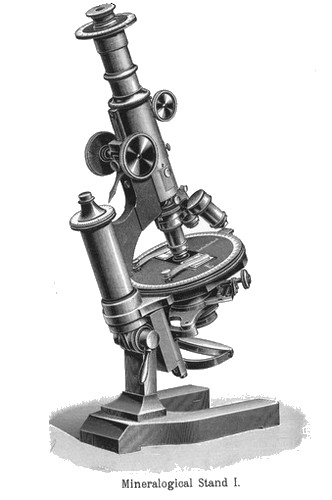
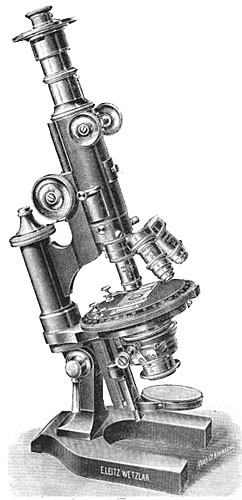
The following was extracted from from the 1899 Leitz catalog:
Mineralogical Stand I.
This microscope corresponds in its dimensions to Stand I as described on page 25. Coarse adjustment by rack and pinion, fine adjustment by micrometer-screw, the milled head of which has 50 divisions, each representing a motion of the objective of 1/100 mm. The condenser, iris-diaphragm and polarizer can be raised and lowered by rack and pinion. A triple condenser facilitates the observation of the axial lines in the microscope. It is so arranged as to be easily replaced by a simple diaphragm-carrier. By means of a collar attached to the end of the tube the objective is brought into coincidence with the centre of the revolving stage. This revolving stage is divided into 360 degrees and fitted with a vernier and index. Two scales on the stage, at right angles to each other, permit accurate location of specimens. The Nicol prism, which serves as a polarizer, can, after turning the iris-diaphragm aside, be drawn out from under the latter. The zero position of the Nicol prism is indicated by a line, as well as the angles 90, 180, 270 degrees. The analyser is mounted in metal and is firmly fixed above the eye-piece. The analyzer rotates on a disc graduated to 360 deg. The front of the tube has a movable window which provides access to the inner tube. In the latter is an opening for the introduction of a Bertrand lens. This lens serves the purpose of magnifying the interference figures produced by the converging rays of polarized light. This lens and the eye-piece can be raised or lowered by rack and pinion. In the analyzer is a slide for the insertion of gypsum and quartz plates at an angle of 45 degrees. In many investigations it is advisable to employ an analyzer introduced laterally into the tube, instead of the one mentioned above.
The following are supplied to complete the stand:
Tripe nose-piece.
Eye-piece 0, with Bertrand's quartered quartz plate.
Eye-piece I with cross-lines, Brezina's Calcsparplate, cleft perpendicularly to its axis, made to fit over eye-piece I, Klein's gypsum and quartz plates for insertion in the opening over the objective.
Price of the stand with these accessoires . . . 184.
The same with eye-piece III, objectives 1, 3, 5, 7. 1/12 oil-immersion, magnifications 15 - 800 . . . 260.
The new mechanical stage No. 88 (See page 71) can be fitted to the stand for the purpose of investigating large preparations and serial sections. (See page 71)
